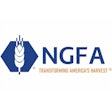
Today, House Agriculture Committee Chairman K. Michael Conaway (TX-11) introduced the Agriculture and Nutrition Act of 2018 (H.R. 2), popularly known as the Farm Bill.
“Rural America is hurting," says Conaway. "Over the last five years, net farm income has been cut in half. Natural disasters and global markets distorted by predatory trade practices of foreign countries, including high and rising foreign subsidies, tariffs and non-tariff barriers, have resulted in huge production losses and chronically depressed prices that are today jeopardizing the future of America’s farm and ranch families."
Conaway also said the farm bill provides certainty and helps producers manage the enormous risks that are inherent in agriculture.
According to Politico, the bill would make between 5 million and 6 million food-stamp recipients subject to stricter work requirements. Democratic committee members broke off talks with Conaway (R-Texas) last month over the proposed changes to the Supplemental Nutrition Assistance Program (SNAP), which represents roughly 80% of farm bill spending.
Politico adds the measure would slightly bolster commodity support programs to help farmers, many of whom have suffered amid a sustained drop in commodity prices that has caused farm income to drop by more than 50% in recent years. The House bill, which would also revamp some of the nation's main farm conservation programs, is projected to cost roughly $860 billion over a decade — about $100 billion below the initial price tag for the current farm bill, which was passed in 2014 and expires on Sept. 30, says the report.
“We are glad to see that the House is taking a first step in the 2018 Farm Bill reauthorization process by releasing its draft bill," says NAWG President Jimmie Musick. "NAWG continues to advocate for a strong crop safety net program which means no cuts to the crop insurance program and maintaining a producer choice between revenue-based (Agriculture Risk Coverage) and price-based (Price Loss Coverage) programs, as well as improvements to both."
Musick says he and NAWG urge Congress to move forward in a bipartisan manner to enable a bill to pass both chambers.
Conaway concludes, "I’m looking forward to quickly moving this farm bill through the House and working with the Senate to deliver a farm bill to the president’s desk that is on time, as the president has asked us to do."
For more information on the bill, visit agriculture.house.gov/farmbill.
















